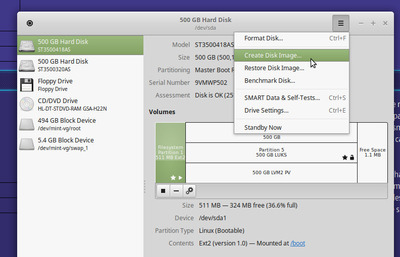First post, by brostenen
- Rank
- l33t++
For those that want a quick tip on how to use Linux for cloning a harddrive, then I have this easy command.
Naturally there are a lot of people here, that know this, however if you are new to Linux or dont know. Then here goes.....
First create a new folder in the Documents folder in your home folder. Like "Images" or "Backup" or something.
Then open the terminal window and write the following:
sudo dd if=/dev/sourcedrivehere conv=sync,noerror bs=128K | gzip -c > /home/myusername/Documents/imagefile.image.gz
Were sourcedrive is what devicename the source are. In my case: sdb
Were myusername is the username you have, and then add whatever path to were you want to save it.
Were imagefile is the name of the file you wish the data to be saved as.
As an example, then I used the following line:
sudo dd if=/dev/sdb conv=sync,noerror bs=128K | gzip -c > /home/Brostenen/Documents/Images/disk.image.gz
Because the USB drive is unit "sdb" on my system. It can be sdc or whatever drive you'r system have named it.
And finally. The beauty of this way, is that it takes into acount if there is any drive error's and it compresses the image file as well.
Once you run the command, then beware that it takes a looooong time when dealing with something like 120 GigaByte.
Just go make some coffee, tea or open a beer. Then go watch a cartoon or a movie..... (Or eat some food)
More explanation.... HERE
For writing the image back to a different harddrive, then the website have instructions for it as well.
I just used the disk tool that came with my Linux distribution (Ubuntu Mate), when I wrote back the image file to my Amiga CF card when testing this.
This method worked for me, cloning an Amiga harddrive. It works perfectly.....
The method is free, easy and I think it takes any filesystem, as long as you can attach the drive to the computer in some way or another.
Don't eat stuff off a 15 year old never cleaned cpu cooler.
Those cakes make you sick....
My blog: http://to9xct.blogspot.dk
My YouTube: https://www.youtube.com/user/brostenen
001100 010010 011110 100001 101101 110011
